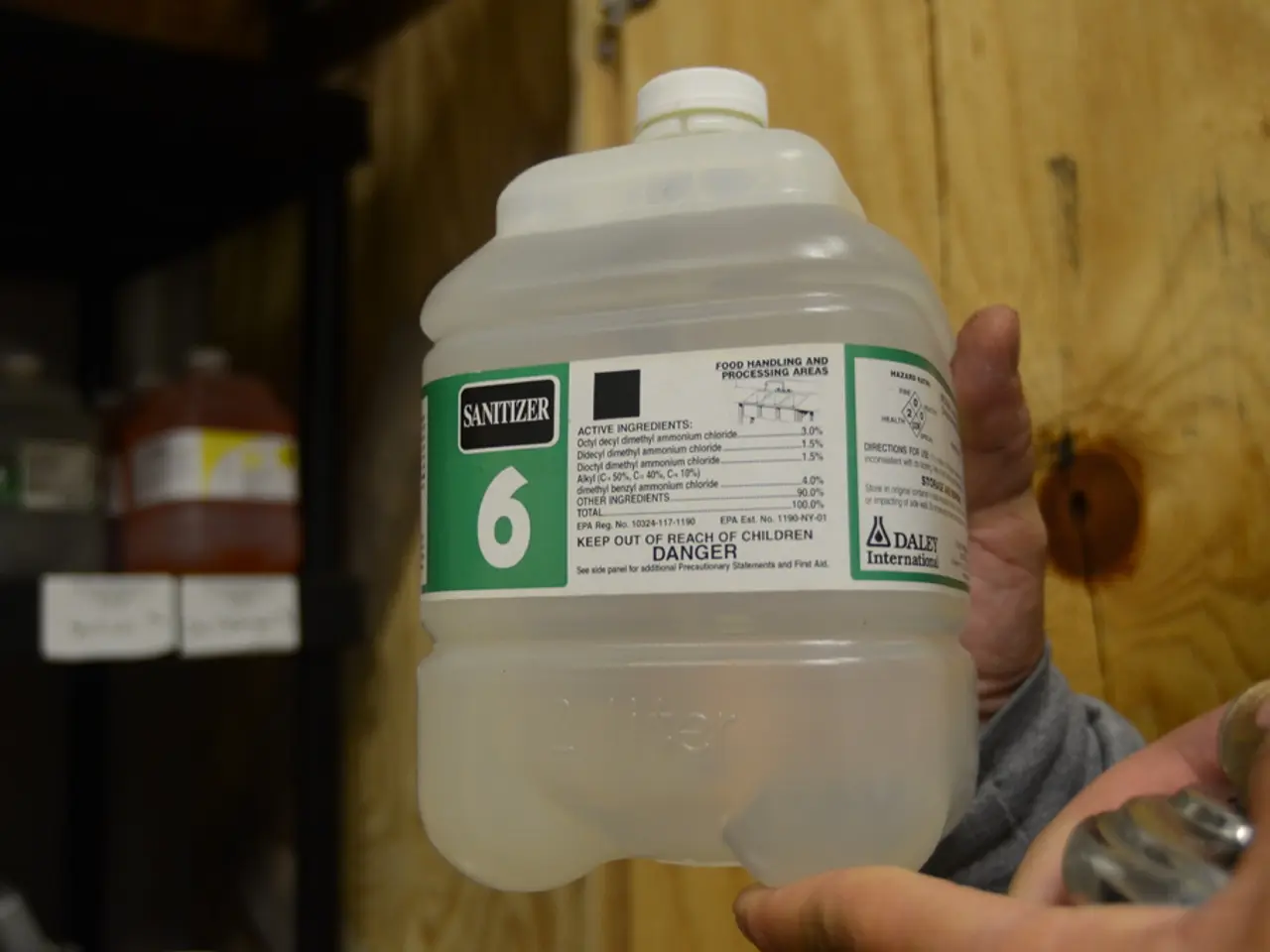Eye Discharge: Understanding the Causes and Ways to Eliminate Them
In our daily lives, it's not uncommon to find a small, sticky substance in the corner of our eyes, commonly known as eye boogers. While this is a normal occurrence, an increase in eye mucus can be a sign of underlying issues affecting the eye's surface or tear ducts. Here are some common causes of excessive eye mucus and what you can do about them.
One of the most frequent causes of increased eye mucus is conjunctivitis, or pink eye. This condition can be triggered by bacterial infections, viral infections, or allergic reactions. Bacterial infections, such as those caused by Staphylococcus or Streptococcus species, can lead to thick yellow or green mucus discharge, while viral infections, often linked to common cold viruses, produce watery eyes with mucus. Allergic conjunctivitis, triggered by allergens like pollen, pet dander, or environmental irritants, causes itching, redness, watery eyes, and mucus discharge.
Allergic reactions to common allergens can also cause eyes to produce more mucus. Environmental irritants, such as smoke or air pollution, can aggravate the eyes and lead to increased mucus production.
Another common cause of excessive eye mucus is a blockage in the tear drainage system, known as nasolacrimal duct obstruction. This blockage can cause tears and mucus to accumulate near the eye, resulting in mucus or pus discharge.
Contact lens wearers may also develop eye mucus if lenses are improperly cleaned or worn too long, leading to irritation or giant papillary conjunctivitis.
For those with blocked tear ducts that do not improve by their first birthday, surgery may be necessary to open the tear duct. Babies can produce eye mucus and may develop eye infections, but a baby with eye discharge similar to an adult is usually healthy.
Removing eye boogers is important to prevent dirt or debris from entering the eye. A warm compress can help loosen eye boogers, making it easier to gently wipe them away with a damp cloth. If there is enough discharge to cause the eyelids to stick shut in the morning, it's advisable to consult an eye healthcare professional to rule out an infection.
Healthy rheum (eye mucus) is typically clear or light yellow, but can be hard, sludgy, or thin after sleeping. Thick, green, dark yellow, or painful eye discharge may indicate an eye infection.
In summary, the common causes of excessive eye mucus beyond normal include bacterial or viral conjunctivitis, allergic conjunctivitis, environmental irritants, and tear duct blockage. These conditions typically cause symptoms such as redness, itching, irritation, and varying qualities of mucus (from watery to thick and colored). By understanding these causes and maintaining good eye hygiene, you can help keep your eyes healthy and reduce the occurrence of excessive eye mucus.
[1] American Academy of Ophthalmology. (2021). Dry Eye. https://www.aao.org/eye-health/diseases/dry-eye-syndrome-list [2] American Academy of Ophthalmology. (2021). Allergic Conjunctivitis. https://www.aao.org/eye-health/diseases/allergic-conjunctivitis-list [3] American Academy of Ophthalmology. (2021). Blocked Tear Ducts. https://www.aao.org/eye-health/diseases/blocked-tear-ducts-list [4] American Academy of Ophthalmology. (2021). Conjunctivitis (Pink Eye). https://www.aao.org/eye-health/diseases/conjunctivitis-pink-eye-list
- Predictive analysis of medical records can help detect early signs of NSCLC (non-small cell lung cancer) and other health-and-wellness conditions like diabetes, bipolar, psoriasis, and spondylitis, aiding in timely interventions and treatment.
- The science behind AQ (airquality) testing is crucial for predicting and preventing eye health issues like conjunctivitis, as poor air quality can exacerbate symptoms and worsen eye irritation.
- In managing various medical conditions such as depression, diabetes, blindness, and COPD (chronic obstructive pulmonary disease), maintaining good health-and-wellness practices, including regular check-ups and medications, can help ward off potential complications and further eye-health problems.
- Researchers continue to explore the link between certain medical conditions, such as arthritis, psoriatic arthritis, eczema, and psoriasis, and their impact on eye health and the development of conjunctivitis or dry eye syndrome.
- In people who have a family history of medical conditions like NSCLC, diabetes, or bipolar, or eye health issues like conjunctivitis, maintaining regular medical check-ups is important to predict and manage potential health risks and issues.
- Regular eye examinations can help detect and manage various eye conditions, from common issues like conjunctivitis and dry eye to more serious ones like glaucoma, which may be associated with medical conditions like diabetes and high blood pressure.
- It's crucial to distinguish between normal eye boogers and symptomatic eye discharge; the presence of excessive mucus, as well as other symptoms like pain, redness, or changes in color, could signal underlying medical-conditions or eye health issues.
- Taking proper care of contact lenses, including cleanliness and timely replacement, can help prevent eye infections, mucus production, and related complications, such as giant papillary conjunctivitis.
- For those suffering from chronic medical conditions like diabetes or bipolar, adhering to treatment plans and seeking regular medical care can help manage their condition and maintain overall eye health.
- By incorporating good health and hygiene practices, such as washing hands regularly, avoiding allergens, and using over-the-counter medications for common ailments like allergic conjunctivitis, one can help minimize the occurrence of excessive eye mucus and maintain optimal eye health.




